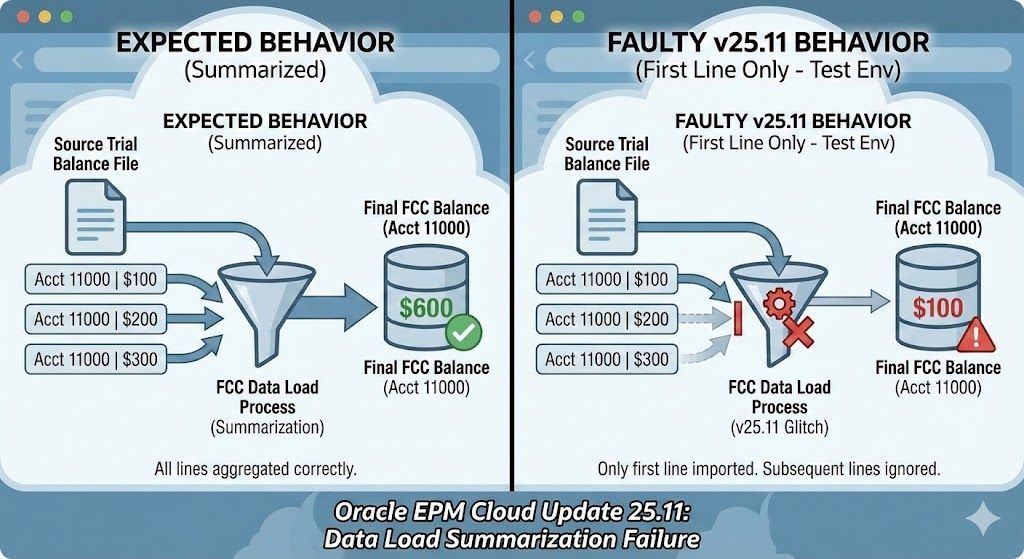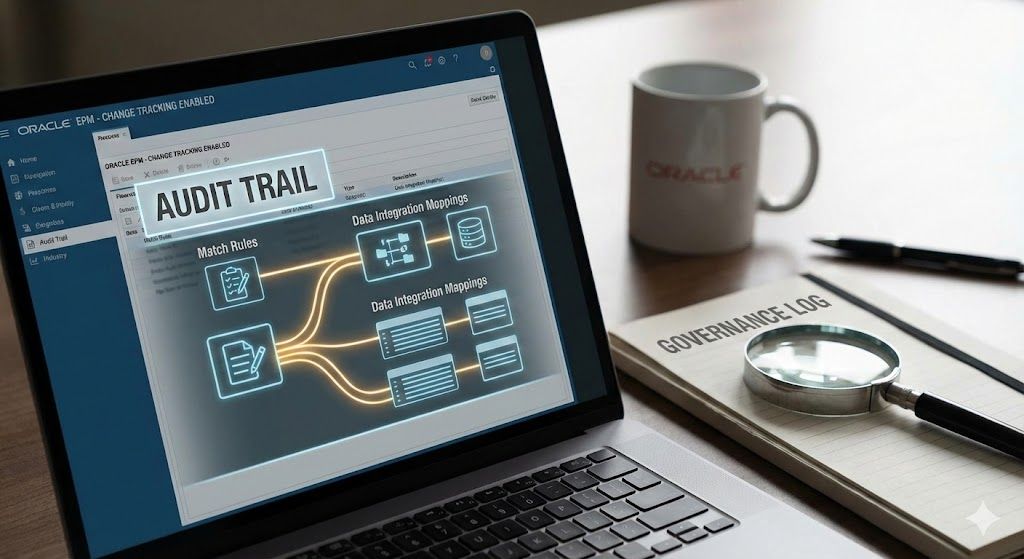Summary and Group Reconciliations in Oracle ARCS: A Comparative Overview
Listen to Tresora and Ledgeron's chatting about this blog post:
Oracle ARCS provides powerful reconciliation tools to help organisations meet their compliance obligations. Let's explore how summary and group reconciliations in ARCS support compliance, focusing on their application across different organisational units.
Summary Reconciliations for Compliance
Benefits:
- Decentralised Control: Enables individual business units or departments to perform their own reconciliations independently, fostering accountability and ownership.
- Scalability and Flexibility: Accommodates varying reconciliation needs across different organisational units, whether it's reconciling a high volume of transactions at the departmental level or a smaller set of accounts at a subsidiary level.
- Standardised Processes : Allows for the implementation of standardised reconciliation templates across the organization, ensuring consistency and adherence to internal controls.
- Audit Trails: Provides detailed audit trails for each reconciliation, capturing user actions, timestamps, and supporting documentation, crucial for demonstrating compliance to auditors.
Example:
Imagine a global organization with multiple subsidiaries. Each subsidiary can leverage summary reconciliations in ARCS to reconcile their individual bank accounts against their respective general ledgers. This decentralised approach allows for efficient reconciliation while maintaining a standardised process across the organization.
Group Reconciliations for Compliance
Benefits:
- Consolidated View: Provides a centralised overview of the reconciliation status across all organisational units, enabling a comprehensive assessment of compliance.
- Intercompany Reconciliation: Facilitates the reconciliation of intercompany transactions, ensuring accurate financial reporting and compliance with transfer pricing regulations.
- Risk Management: Allows for the identification and mitigation of risks by highlighting discrepancies and exceptions across different organisational units.
- Streamlined Reporting: Simplifies the generation of compliance reports by aggregating data from various organisational units, saving time and effort.
Example:
A parent company can utilize group reconciliations in ARCS to reconcile the balance sheet accounts of all its subsidiaries. This provides a consolidated view of the financial position and helps ensure compliance with group accounting policies and regulatory requirements.
Choosing the Right Approach for Compliance
Summary reconciliations are ideal for organisations seeking to decentralize reconciliation responsibilities while maintaining standardised processes and audit trails.
Group reconciliations are best suited for organisations that require a consolidated view of reconciliation status across multiple units and need to manage intercompany transactions effectively.
By strategically utilising both summary and group reconciliations, organisations can strengthen their compliance framework, improve financial reporting accuracy, and streamline audit processes.






